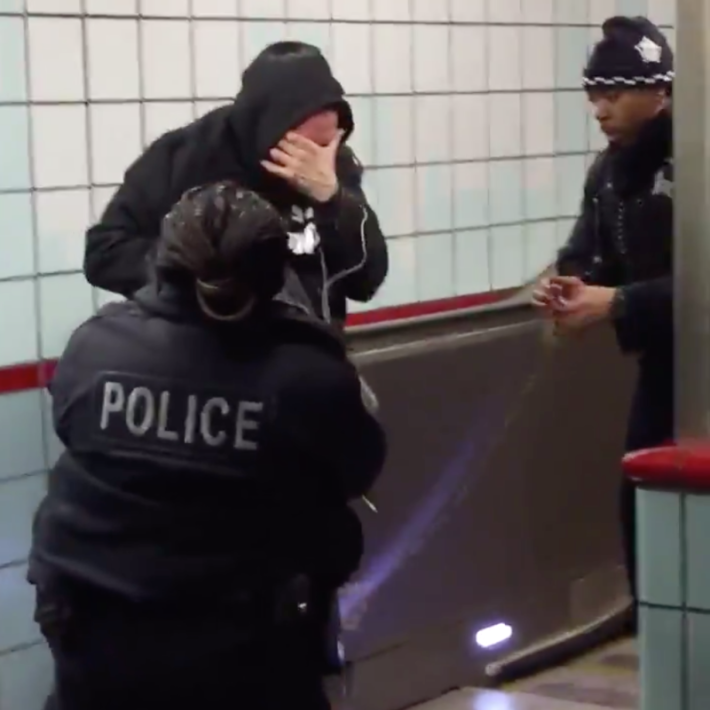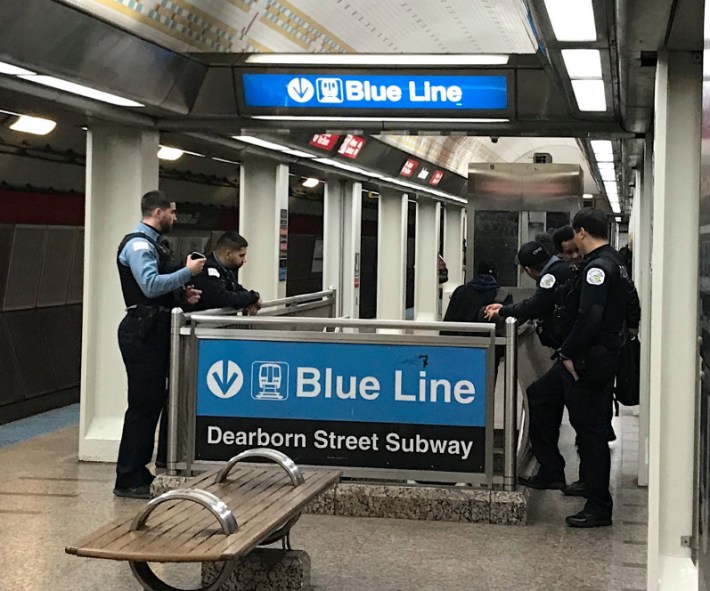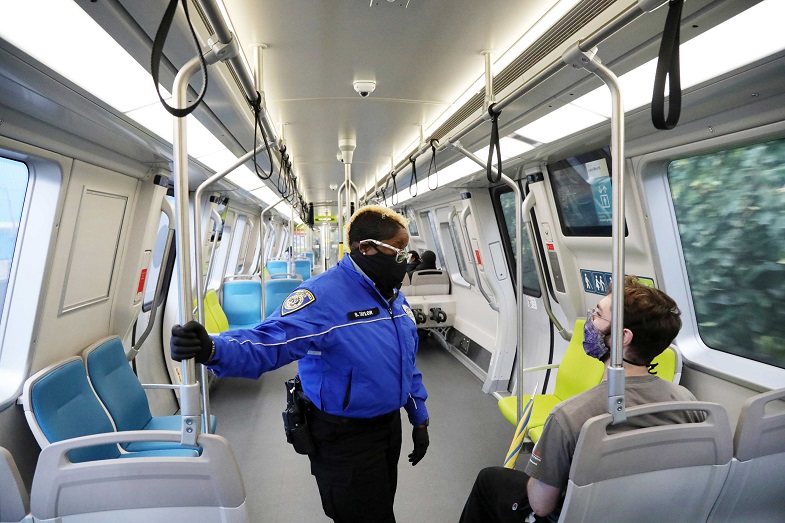There's no question that violent crime on the CTA is a serious issue. If anything, the problem seems to have gotten worse during COVID-19, when the massive drop in ridership meant there were far fewer "eyes in the cars," on platforms, and in buses to help deter problematic behavior. Trauma and economic stresses from the deadly pandemic, which disproportionately impacted Chicago's lower-income communities, surely haven't helped matters.
While crime can happen any where in public space, recent headlines about offenses on transit are highly troubling. For example, here are some incidents from the past two weeks.
- CPD: Man shot in neck, critically wounded on Green Line near 51st was not intended target
- Man in good condition after someone cut his neck on Blue Line near Armitage
- Woman punched and robbed on Adams / Wabash platform
- CPD: Man arrested after firing gun inside Blue Line train during attempted robbery
In particular, CTA bus drivers are justified in being concerned about crime, since they spend their entire shift dealing with the public, and enforcing fares and rules on their vehicles, which can put them at risk of violence. There was a frightening reminder of that on June 10 in West Pullman, when a man who was angry because he was turned away from a bus for refusing to wear a mask fired at the doors. Fortunately no one was hit.
As reported by CBS’s Jermont Terry, the Amalgamated Transit Union Local 241, which represents CTA workers, says it's in talks with the agency's management about posting armed guards on certain buses and trains, in addition to existing Chicago Police patrols. “The conversation is centered around armed security on the bus,” union president Keith Hill said. “We can't have security everywhere, so we will push and help authority identify the routes that we deem troublesome."
However, the CTA denied that it's entertaining the idea of hiring armed guards, CBS reported. The agency pointed to a 40 percent overall drop in crime this year.
However, lockdown didn't start until late March of 2020, and CTA ridership has a long way to go before it reaches pre-pandemic levels. Moreover, last the year violent crime rate on the 'L' doubled, despite plummeting ridership.
Again, CTA workers' demands that action be taken to keep them and their passengers safe should be taken seriously. However, saturating the system, or even just certain bus lines, with armed guards, isn't the right approach to preventing violence. It could even increase the chances of minor violations escalating into tragic incidents.
We saw that on February 28, 2020, the day Mayor Lori Lightfoot announced the city would be adding 50 new officers to the police department’s public transportation unit, in addition to several hundred officers who were already patrolling the CTA. That very afternoon police tried to detain Ariel Roman, 33, after they saw him illegally walking between train cars.

That led to the officers pepper spraying, Tasing, and recklessly shooting up a Grand Avenue Red Line station escalator at the unarmed man as he tried to flee the arrest. Roman was shot twice in the buttocks and abdomen, suffering life-changing injuries. He has filed a federal lawsuit agains the city of Chicago and the two officers.
There was another police shooting on transit on March 4 of this year. After Alfredo Alanis, 33, refused to pay his fare on a South Shore Line commuter train and became belligerent, onboard staff called for police backup, authorities said. When the Northern Indiana Commuter Transportation District Transit officer who responded tried to escort Alanis off the train at the Hegewisch station, Alanis put the officer in a headlock, compressing his neck. The officer, who said he feared for his life, shot Alanis in the abdomen.
Obviously the South Shore shooting was more justifiable than the Red Line shooting. But it also highlights the increased potential for deadly violence when armed personnel get involved in enforcing minor infractions like fare evasion.
Another issue is that security guards with guns on buses will not put all riders at ease, due to the increased potential for racial profiling. “More armed officers on buses and trains doesn’t make everyone feel safe and puts Black and Brown transit riders at greater risk,” Active Transportation Alliance advocacy manager Julia Gerisamenko wrote in a blog post in the wake of the Ariel Roman shooting. “The legacy of racist and discriminatory policing in Chicago can’t be ignored on our transit system.”

So if armed guards on transit isn't the answer, what can we do in the short term to increase safety on the CTA?
Streetsblog Chicago has previously floated the idea of bringing back CTA conductors, a position that was eliminated in 1998 to cut costs, to deter crime and encourage compliance with rules against smoking and other quality-of-life violations. The conductors could also do constructive outreach to the many homeless people who currently shelter on the CTA, helping to connect them with housing and healthcare resources.
Gerisamenko cited a pilot project on the San Francisco area’s BART system in which 30 unarmed “transit ambassadors” trained in de-escalation and anti-bias techniques have been deployed on the system to address safety concerns.
Last February, on the one-year anniversary of the program, the San Francisco Chronicle's Carly Graf deemed the initiative a success. "What started as a contentious pilot program to introduce alternatives to traditional armed law enforcement on BART has become an integral part of the regional railroad’s efforts to protect the wellbeing of all its riders." While ambassadors conducted over 12,000 "educational interactions" with riders, according to BART, out of those incidents, the ambassadors only called police on 132 occasions. That's only about 1.1 percent of the cases.
So while it's understandable that the transit union is pushing for adding armed guards on the CTA, the conversation should really be centered around deploying unarmed outreach personnel to buses and trains. Last month the agency had transit ambassadors welcome commuters back to stations and provide info on efforts to keep the system safe and clean. The next step is have these ambassadors make the rounds on CTA vehicles.




